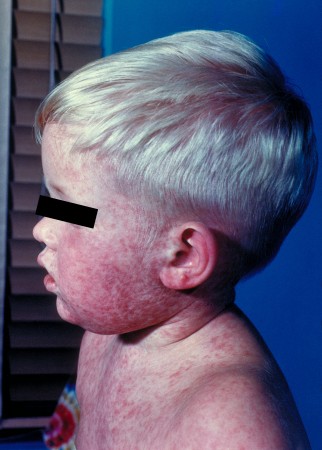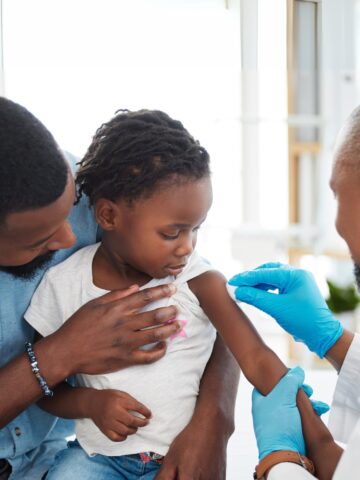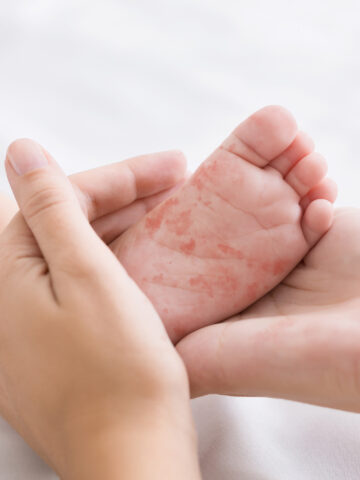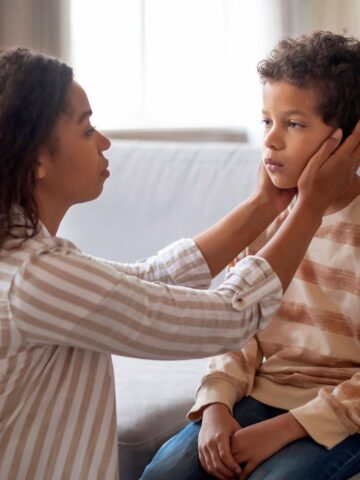New measles cases continue to be reported in Orange County, leaving health care providers on alert for potential cases of the contagious disease.
“Any one case is troubling,” says Dr. Antonio Arrieta, CHOC director of infectious diseases. ”We shouldn’t be seeing measles in the U.S.”
The state has seen an increase in measles cases this year: Less than four months into the year, California has seen more measles cases in 2014 than in the entire year of 2010, the most recent year of available data.
Symptoms begin with high fever, transition to rash
Highly contagious, measles is transmitted through the air, Dr. Arrieta says. The disease is also strong: Contagions can remain in the air for hours after an infected person leaves an area, he says.
Symptoms typically begin to surface eight to 10 days after initial exposure to the virus, and then develop in stages. Early symptoms include a high fever – typically between 103 and 105 degrees Fahrenheit – cough, watering eyes and runny nose. A rash becomes apparent around the third day of symptoms, worsening the next day and continuing to spread over the body as the disease progresses.
People are contagious about four days before the rash begins and four days afterward, according to the Centers for Disease Control (CDC).
Measles is not treated. Instead, physicians allow the disease to run its course, while monitoring for possible complications, which are more dangerous than the disease itself. Dr. Arrieta says that most children with measles will develop pneumonia, which the CDC reports as the complication most likely to cause death in youth. One in 10 measles cases leads to ear infections, and 8 percent of sufferers report diarrhea, the CDC says.
Further, one child in every 1,000 measles cases will develop a brain inflammation that can lead to convulsions, the CDC reports.
Immunity ‘critical mass’ is necessary
“This highlights the problem that if you’re not immunized, you are at risk,” Dr. Arrieta says.
Dr. Arrieta emphasizes that the vaccine is safe and readily available. Following the vaccination, some children have mild reactions, such as a short-lived, low-grade fever.
Ninety percent of the population must be immune to measles to stop or prevent the spread of the disease – and that rate must factor people who cannot have the vaccine for health reasons or age, or those who don’t develop immunity from the vaccine, says Dr. Arrieta.
“If you account for many people who are not immune because they are too young, or have a condition that prevented them from getting the vaccines, then you are in a constant state of being close to that critical 90 percent,” he says. “If you account for all of those who can’t have the vaccine, and those who don’t want to, you’re getting even closer to going below 90 percent. In that case, at any given time, it will spread.”
The MMR vaccination – which covers measles, mumps and rubella – is administered in two doses. The first is given between 12 and 15 months of age, and yields a 90 percent chance of developing immunity against measles. The second dose can be given four weeks later, but is typically administered at age 4 or 5, and pushes the likelihood of measles immunity to 95 percent.
Measles widespread in foreign countries
Most measles cases in the United States – including two of Orange County’s reported cases in 2014 – are contracted by international travel, according to the CDC.
The CDC reports that measles is widespread throughout the world, including parts of Europe, Asia, the Pacific and Africa. Dr. Arrieta cautions parents that even developed countries report measles cases.
“Oftentimes, people don’t recognize that the countries they are traveling to have frequent measles cases,” he says. “Cases come from Europe, where people don’t think they’re at risk. It is a very small world these days.”







